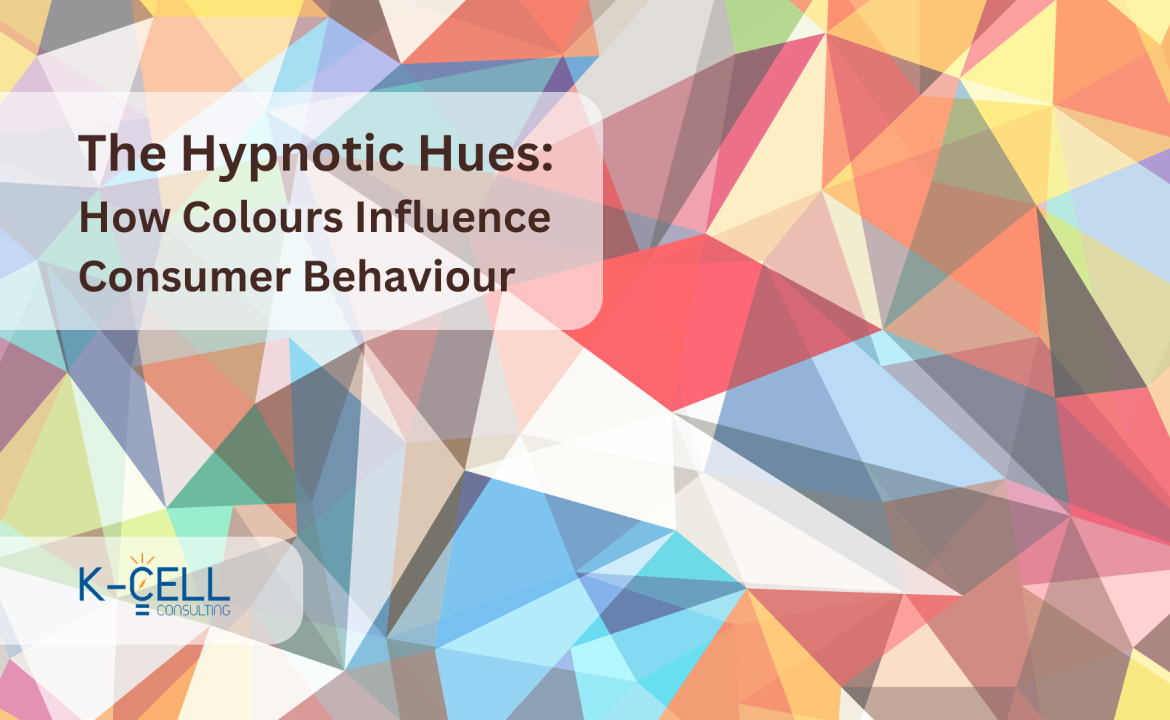The Hypnotic Hues: How Colours Influence Consumer Behaviour
Remember the joy of being doused in vibrant colours during Holi? The sheer power of those pigments to transform a regular day into a riotous celebration is undeniable. But did you know colours possess a similar magic in the world of marketing? Have you ever been drawn to a product purely because of its packaging colour? Or felt a sense of calm while browsing a store with a specific colour scheme? Colours, far from being mere visual aesthetics, play a powerful role in influencing consumer behaviour. They’re not just decoration; they’re silent seducers, whispering sweet nothings to your subconscious and influencing your buying decisions in surprising ways.
The Science of Colour Psychology
Research by Stephen Lichtenstein, a renowned marketing professor, suggests that colour can trigger emotional responses in mere milliseconds. It’s like a secret language your brain understands before your conscious mind even catches on. Colours evoke emotions, create associations, and guide our attention. Research by Andrew Elliot and Matthew Maier found that red backgrounds increased participants’ willingness to pay for premium products, while also triggering a sense of urgency to snag a deal before it disappears. No wonder that red is a popular choice for sale signs and clearance banners. Colours hold an undeniable power to shape our perception.
The Colour Palette of Persuasion
Understanding these colour associations allows companies to create targeted marketing strategies. Marketing professionals have become colour chameleons, adapting their strategies to mesmerize specific audiences. Here’s how they’re playing the chromatic game by leveraging colour psychology:
- Fast-moving consumer goods (FMCG): Ever wondered why Maggi noodles are associated with vibrant yellow packaging? Yellow represents happiness and optimism, perfectly aligning with Maggi’s “taste the happiness” tagline. Similarly, the green on Parle-G’s familiar biscuit pack signifies freshness and natural ingredients, appealing to health-conscious consumers.
- Luxury brands: Black, often associated with sophistication and exclusivity, is a dominant colour in luxury automobile dealerships. For example, Royal Enfield motorcycles leverage the power of black to project an aura of premium quality and timeless style.
- Comfort and Trust: Blue, linked to feelings of security and peace, is a popular choice for financial institutions. ICICI Bank and HDFC Bank both incorporate blue prominently in their branding, conveying a sense of trust and reliability to their customers. Or how can we not mention the “Big Blue”, IBM, inspiring trust for more than a century.
- A Feast for the Senses: Restaurants are well aware of the power of colour. Studies by Aradhna Krishna and David Elder demonstrate that a warm colour scheme dominated by orange and yellow can create a vibrant, energetic atmosphere, encouraging faster dining and potentially higher table turnover.
- Premium Quality: Research by Labrecque and Milne suggests that colour can even influence our perception of product quality. Studies have shown that products presented on a high-contrast background are often perceived as being of higher quality.
Cultural Considerations
While colour psychology offers valuable insights, cultural context plays a crucial role. The language of colour can have regional dialects. In India, red symbolizes prosperity and good luck, influencing the extensive use of red in wedding attire and festive decorations. This differs from Western cultures, where red might represent danger or stop signs. Moreover, while Europe may prefer pastel shades whereas Africa may favour bright red and yellow. Understanding these cultural nuances is crucial for brands operating in a globalized market.
Beyond Individual Colours: The Power of Colour Combinations
The impact goes beyond individual colours. Colour combinations can create specific moods and experiences. Imagine a calming spa with soothing shades of green and blue, promoting feelings of relaxation and rejuvenation. Or picture a children’s toy store bursting with vibrant colours like pink and yellow, creating a sense of fun and excitement.
In a nutshell
From influencing impulse purchases to creating lasting brand associations, colour is a powerful marketing tool. By understanding the science behind colour psychology and adapting it to cultural contexts, companies can craft a visual symphony that resonates with their audience’s subconscious desires and emotions. So next time you find yourself drawn to a product purely for its colour, remember, it might not be just a coincidence – it’s the captivating power of colours playing hide-and-seek with your wallet!

